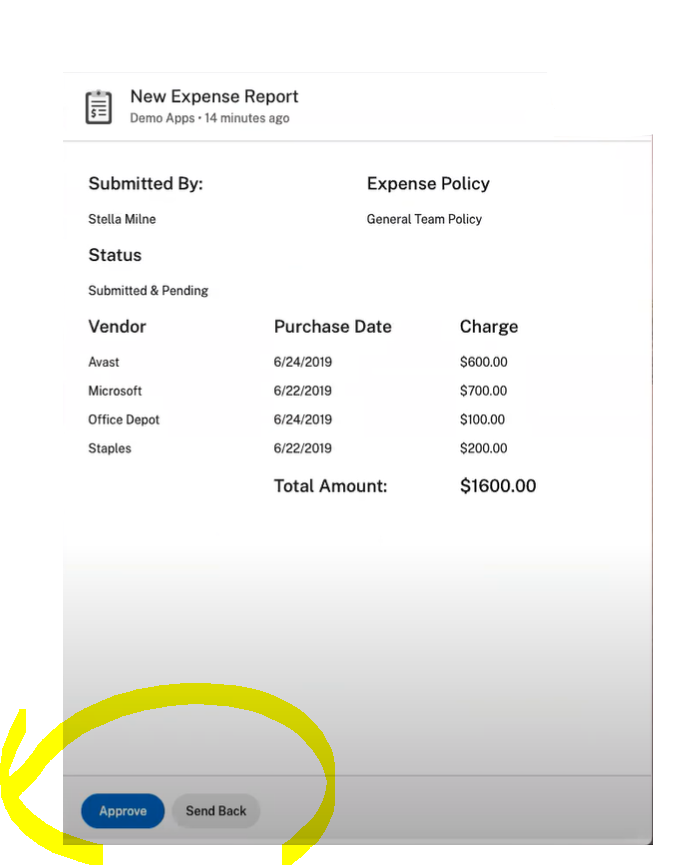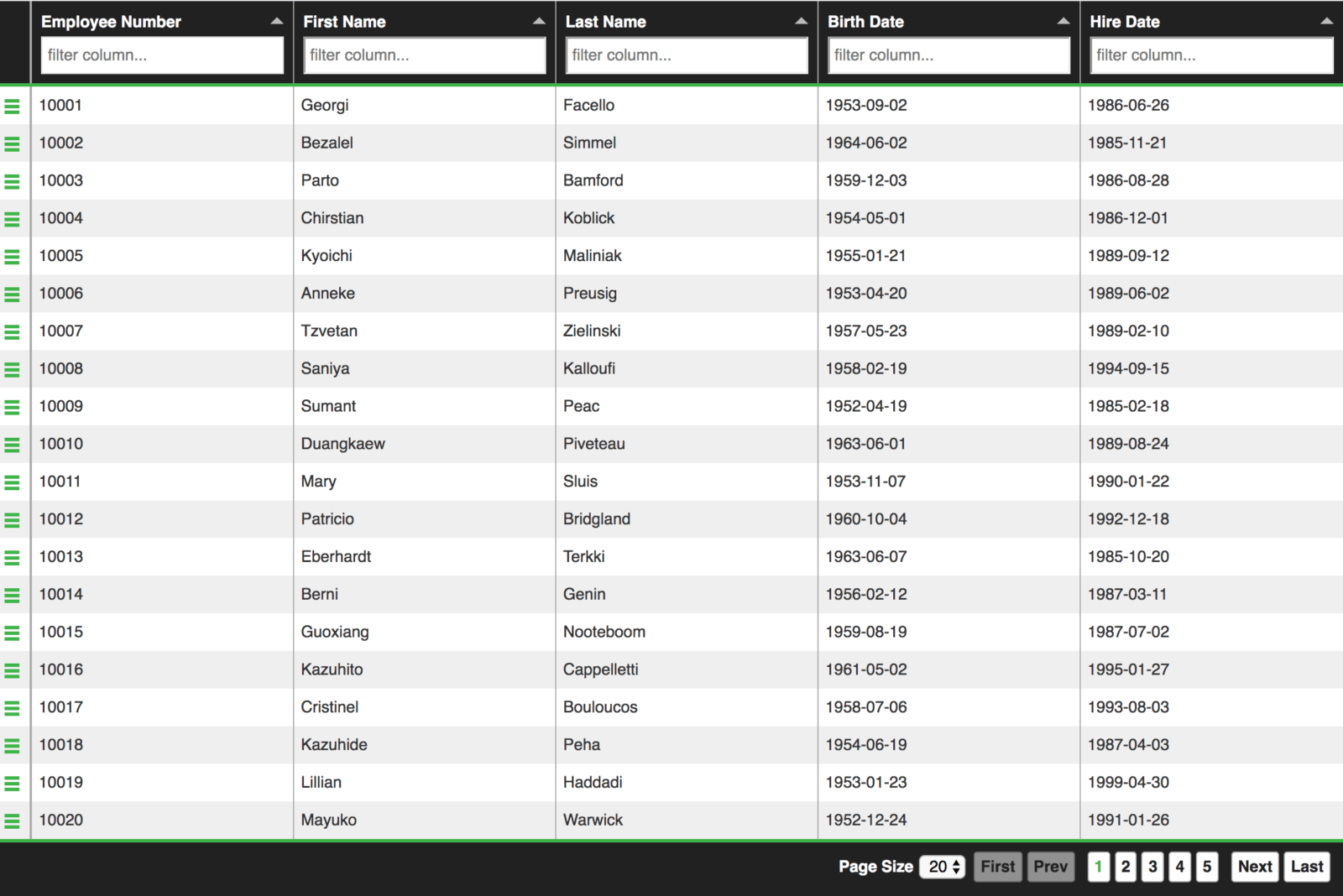Top Use Cases for Microapps that Skyrocket Enterprise Productivity
by Jeremy H • December 21, 2020

The use cases for microapps are limitless when it comes to overcoming enterprise workflow inefficiencies. As autonomous mini-applications that integrate with more complex enterprise applications and databases, microapps allow you to quickly and easily perform a specific function without interacting with the enterprise app or database directly.
While this is the standard definition for microapps, it doesn’t exactly put microapps into a real-world context. That’s why we wrote this article. Below, we’ll describe three of the top use cases for microapps that can skyrocket productivity across your enterprise IT infrastructure.
Did you know you can generate a full-featured, documented, and secure REST API in minutes using DreamFactory? Sign up for our free 14 day hosted trial to learn how! Our guided tour will show you how to create an API using an example MySQL database provided to you as part of the trial!
Use Cases for Microapps #1: Approval Systems
One of our favorite use cases for microapps involves the streamlining of decision-maker approvals. Whether you’re the one waiting for the approval – or the one doing the approval – the process can be a headache while representing a significant workflow delay. Below, we’ll look at two different microapp examples that speed up the process of approvals for (a) expense requests and (b) database updates.
Expense Requests Microapps
Decision-makers often delay a simple expense approval task, sometimes for hours or days. That's because logging into the expense approval system represents a significant workflow disruption. First, you have to log into the system with a username and password. Then, you have to drill through menus to find the expense you need to approve (if you find it at all). Then, the entire process worsens when multiple people need to approve a single expense. At the end of the day, a task that should take about 30 seconds can take days, weeks, or more.
An expense approval microapp can bypass these bottlenecks by delivering a targeted, interactive pop-up notification for the expense that requires approval. The popup appears in the decision-maker’s workspace notification feed, offering a brief description of the expense. Additionally, the microapp offers two buttons: “approve” or “send back.” After the decision-maker selects one of these choices, the microapp updates the expense approval system. In other words, decision-makers don’t have to context-switch into another app environment to approve expenses anymore.
Here’s an example of an expense approval microapp notification that you can create with DreamFactory’s Citrix Workspace integration:

By clicking on the notification, you can expand it for additional details before selecting “Approve” or “Send Back”:

Database Update Microapps
Another one of the most popular approval system use cases for microapps relates to database changes. Let’s say you work in the marketing department of a company that sells a range of products. Whenever someone adds a new item to the product database, a marketing team leader needs to approve the item and its description to ensure it adheres to corporate guidelines.
In this case, you can develop a microapp that integrates with the database that stores the product information. The microapp offers a simple form that allows team members to add new product information to the database. Filling out the form triggers an interactive pop-up notification that goes to the team leader for approval. Clicking the “approve” button on the pop-up allows the database update to proceed.
You can create a microapp like this using the microapp builder available through the DreamFactory Citrix Workspace integration. In the image below, the microapp offers a form for adding a new product:

After submitting the form, a microapp approval notification shows up in the team leader’s microapp feed:

The decision-maker can approve the change from within the microapp, or you can click on the notification, which expands it to show additional information:

After clicking “Approve,” the database updates with the new information.
Final thoughts on “approval system microapps”: The beauty of “decision-maker approval microapps” is that the task (and its associated data) come directly to the decision-maker. This skips the process of the decision-maker needing to log into a special system and hunt for the task that needs approval. By scrolling through their microapp notification feeds, decision-makers can breeze through pending approvals faster than ever. These feeds are accessible on a smartphone, laptop, or tablet. Moreover, microapp developers can add the option of giving notifications priority levels. This forces decision-makers to address the most important approval tasks immediately.
Use Cases for Microapps #2: Interactive Web Tables
The old way of extracting and sharing specific business metrics from an enterprise database involves the following time-consuming steps:
- Talking to your database manager.
- Asking him or her to run a specific report.
- Exporting the data into an Excel spreadsheet.
- Emailing the spreadsheet as an attachment to the team.
The problem with this method is that you have to wait for the database manager to run the report, emails go missing, and attachments get lost.
An “interactive web table microapp” is an excellent way to solve the workflow delays associated with pulling and sharing exported database reports. The interactive web table makes the database information you want to share available through a visual, point-and-click interface.
These simple microapps are easy to set up and launch with the DreamFactory API platform and its native Tabulator integration. DreamFactory also includes an automatic API generator that can create a fully-documented and secure REST API for any database in just a few minutes. With less than thirty lines of code, your interactive web table microapp is ready to go.
The web table means that you don’t need any SQL knowledge to explore, share, and organize your database data for the exact metrics you need. Instead of relying on exported Excel documents that you share through email, the web table allows you to simply share a link with your team.
Here’s a demo web table microapp that you can interact with. The DreamFactory team built this web table with DreamFactory’s Tabulator integration. This app uses less than 30 lines of code:

Final thoughts on interactive web table microapps: Interactive web table microapps offer a quick and inexpensive way for team members and decision-makers to explore and share database data without needing to write a single query in SQL. You can create a visual, interactive web table microapp like the one above in less than a day. This microapp allows you to:
- Free up IT and database managers to work on more important tasks.
- Access, explore, and organize key business metrics quickly and inexpensively.
- Share metrics and information with your team by simply sending them a link.
Use Cases for Microapps #3: IT Support Tickets
Problems with enterprise apps invariably present themselves. The faster IT support learns about these problems the sooner they get resolved. The issue is that it takes a lot of effort for users to submit an IT support ticket. Users typically have to authenticate into a separate IT support application that they’re not familiar with. Then, they have to navigate through the application to submit a description of the problem.
The hassle of submitting support tickets often results in team members delaying the task. Also, the time it takes to submit the support ticket represents lost productivity. This is where a support ticket microapp can help.
With a support ticket microapp, team members simply need to:
- Go into their workspaces.
- Click the button for the support ticket microapp.
- Describe the incident.
- Press send.
Since the microapp for support tickets is connected to the enterprise support ticket system, employees can interact with the enterprise system more efficiently.
With the DreamFactory Citrix Workspace integration, you can access drag-and-drop microapp building tools and pre-built microapps. These let you rapidly launch an IT support microapp like the one above. Once in operation, the incident form will look something like this:

Final thoughts on IT support ticket microapps: Beyond the development of IT support microapps, there’s another IT support benefit that comes from microapps in general. They significantly reduce your IT support tickets and IT support expenditures. By simplifying and speeding up the process of completing the most frequently-used tasks in complex enterprise apps, team members will not encounter as many user-related problems.
Did you know you can generate a full-featured, documented, and secure REST API in minutes using DreamFactory? Sign up for our free 14 day hosted trial to learn how! Our guided tour will show you how to create an API using an example MySQL database provided to you as part of the trial!
Conclusion
After reading this article, you’ve seen some concrete examples of how microapps can streamline operations in an enterprise IT infrastructure. You’ve also seen how the DreamFactory API platform allows you to quickly build useful microapps with its API integration tools and native connections with Citrix Workspace and Tabulator.
If you’d like to know more about how DreamFactory can support your enterprise microapp strategy – or if you’d like to try DreamFactory out for yourself – contact our team to schedule a free hosted trial of DreamFactory now.
Related reading:
Enterprise Apps vs. Microapps: How Microapps Are Improving App Interactions
Fascinated by emerging technologies, Jeremy Hillpot uses his backgrounds in legal writing and technology to provide a unique perspective on a vast array of topics including enterprise technology, SQL, data science, SaaS applications, investment fraud, and the law.
























